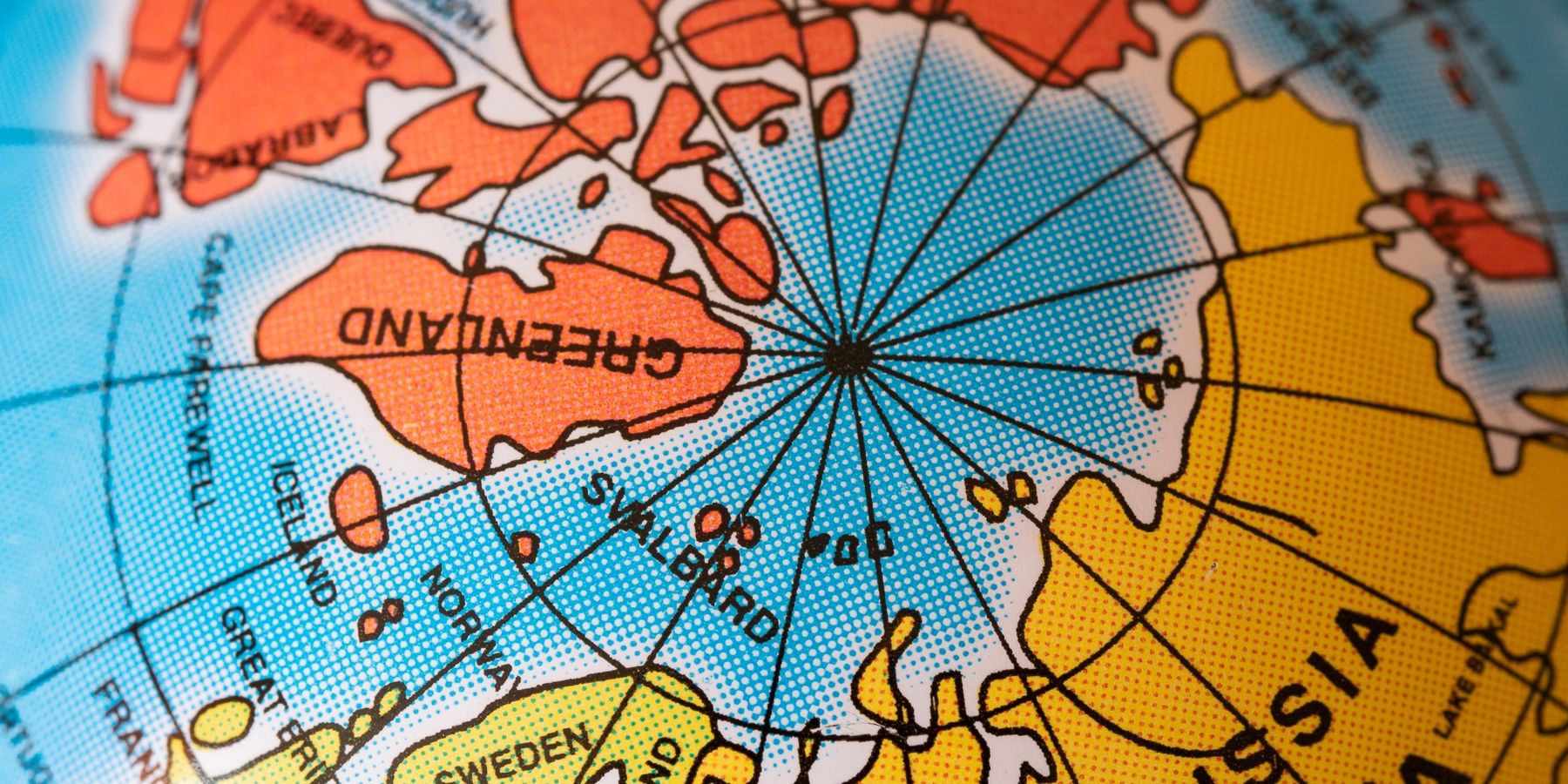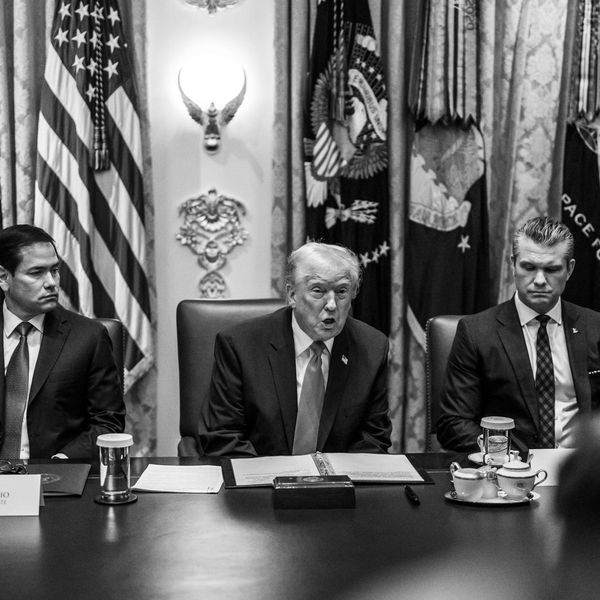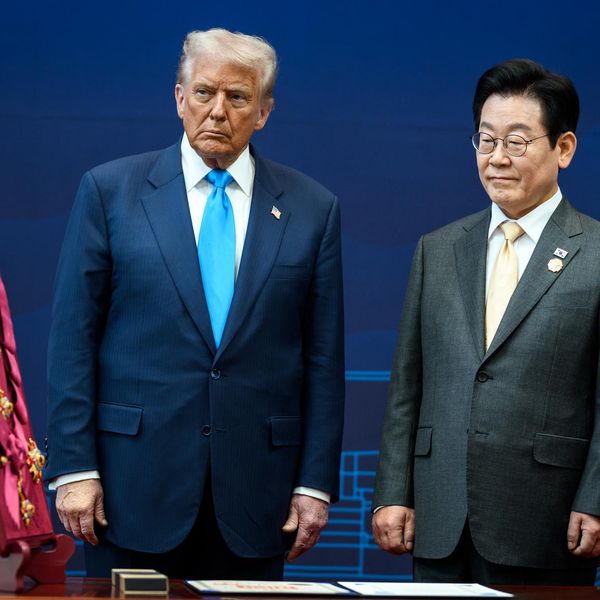Recent Trump Administration activities in the Indian Ocean reveal that decision-makers are hardly the practitioners of restraint the nation was promised.
Reported plans to rekindle what was a very bloody civil war in Yemen and the discreet deployment of bombers to Diego Garcia to threaten Iran is a waste of precious time and scarce resources at the expense of other more important America First priorities.
If America First is to truly entail the prudent exercise of power, then it should be considered in service of national interests in another ocean completely — the Arctic.
Manifrost destiny
Given its inaccessibility, regional stakeholders have long tacitly agreed to minimize confrontation there: "Arctic exceptionalism" and "High North, Low Tension" have been historic bywords to describe the region.
As warming opens up greater access to the region, commercial ventures will become increasingly feasible. The principal opportunities encompass logistics, fisheries, tourism, and, most prominently, resource extraction.
According to the U.S. Geological Survey of 2008, the region may contain an estimated 90 billion barrels of oil and 46 trillion cubic meters of natural gas, approximately 13 percent and 30 percent of undiscovered global reserves, respectively.
Diminishing sea ice coverage also translates into opportunities for maritime transportation routes that would significantly shorten travel times and reduce fuel requirements. Moreover, Arctic waters are relatively "safer" when compared to five of the world's eight primary waterways that are subject to risks arising from conflict or terrorism.
According to a December 2024 analysis of Arctic states' investments (excluding China), the total amount of financing — public and private — has averaged an estimated $107 billion annually between 2017 and 2021. Russian investments constituted the preponderance (61.6 percent) while the U.S. represented the second most (14.4 percent). Investments by the other six states comprised the remaining 24 percent.
Unfortunately, the opening of new trade routes has historically transformed once sleepy backwaters into arenas for competition and the Arctic is no different.
The last Cold War
Russia has made the Arctic Ocean a security priority. It has re-established its military infrastructure along its northern coastline — three major bases, 13 airfields, 10 radar stations, as well as border and emergency rescue stations.
The Russian icebreaker fleet now totals 41 ships, dwarfing that of the American and allied fleets combined. Russia possesses seven nuclear icebreakers; the United States and allies possess none.
More ominously, Russia has introduced its low-intensity warfare playbook to the region; provocative actions since 2020 have included air incursions, military exercises, GPS interference, electronic warfare, and underwater sabotage.
The PRC similarly deems the Arctic a national interest and has implemented a comprehensive approach along diplomatic, economic, technological, and military vectors. China has declared itself a “near-Arctic” state and, as of 2023, has invested over $90 billion in the region over the past decade. The PRC Navy has already surpassed the American fleet and is procuring icebreakers. China also participates in joint naval, aerial, and coast guard exercises and patrols with Russia.
In sum, the historically peaceful region is now the only region in which the U.S. directly encounters both Russia and China.
Favorable home field
Fortunately, unlike the Indian and Pacific Oceans, the Arctic region lies within the jurisdiction of well-functioning regional multilateral institutions.
The main intergovernmental forum, the Arctic Council, consists of eight permanent member countries (six of which are U.S. NATO allies). Founded in 1996, the council has succeeded in maintaining critical multilateral cooperation on areas such as emergency response, environmental regulations, and maritime access. (To protest Russia's invasion of Ukraine, the U.S. and other permanent members announced in March 2022 that they would temporarily suspend their participation on the council for the remaining term of Russia's two-year chairmanship. Council activities resumed upon Norway's assumption of chairmanship in May 2023.)
Furthermore, the U.S. is not a signatory to the United Nations Convention on the Law of the Sea (UNCLOS), which processes contested maritime claims. The U.S. contends membership would limit its sovereignty but in practice its absence puts the country’s claims at a disadvantage, depriving them of legitimacy in the eyes of other signatories as well as a timely resolution. Upon ratification, states have up to ten years to map and submit proposed limits of its maritime claim.
The convention may be far from perfect but it has been successful in processing council members’ disputed territorial claims, such as those between Russia and Canada in 2010.
Next steps
First, President Trump's diplomacy toward Canada and Denmark has defied logic. The exploration of a closer association with Canada and acquisition of Greenland could have been a bold visionary enterprise for America First. Instead, the president needlessly alienated two allies at a critical juncture in regional security.
To ensure continued effective multilateral governance, the president must immediately reverse course and explore confidence-building measures to repair the unforced errors of the past three months. To this end, the United States should signal its readiness to join the UNCLOS. The convention is far from perfect but the benefits arising from redeeming these two relationships and reinforcing global norms in favor of conflict resolution via diplomacy outweigh the costs.
Whether the administration's bid to normalize relations with Russia could result in diminishing the "no limits” partnership with China is debatable. Opponents assert no amount of enticements would lure Russia away from China. Proponents counter Russia's standing as the junior partner is a latent fault line that would become a source of discord if relations with the U.S. even improved marginally.
Two factors will influence the durability of their relationship — the degree to which both states mutually benefit and the extent to which the Arctic economy diversifies. If the economy does not diversify beyond energy, then Russia will remain a coequal by virtue of geography. If the economy does diversify beyond energy, then China may conclude Russian provocations undermine regional stability and will pursue greater economic linkages with the other Arctic states. Such outcomes are confined to the long term and require continuous monitoring.
In the interim, one option entails capitalizing on its importance to the Russian economy. The Arctic comprises about 20% of Russian exports and ten percent of its GDP; its development will be essential to unlocking the enormous potential of Siberia. Accordingly, the U.S. could offer lifting sanctions on the projects in the Arctic or guaranteeing Western investments if Russia cooperated on Ukraine.
At a minimum, the U.S. could engage Russia on objectively important matters, such as recovering radioactive material accidentally released during the Cold War and establishing multilateral mechanisms to prevent incidents from needlessly escalating. Vis-a-vis China, the U.S. could mount a diplomatic campaign via two traditional tools — competitive shaming ("China is a poor environmental steward") and outbidding ("America is committed to sharing green technology.").
Lastly, the U.S. should cultivate opportunities with two observer states -- India and Japan.
India emphasizes collaborating with all stakeholders in the Arctic, and the U.S. should ensure Russia does not monopolize the relationship. Japan is a “near-Arctic” state also and possesses a formidable navy that can help ensure the freedom of navigation as new routes open up.
In his second inaugural address, President Trump heralded a new golden age — golden ages are achieved when nations overcome the challenges presented by a new frontier. The Arctic Ocean is that frontier.
- 'America First' meets Greenland, Taiwan, and the Panama Canal ›
- Trump can leverage the Arctic to end Ukraine War ›
- Did the Alaska Summit usher a new ice age? | Responsible Statecraft ›
















